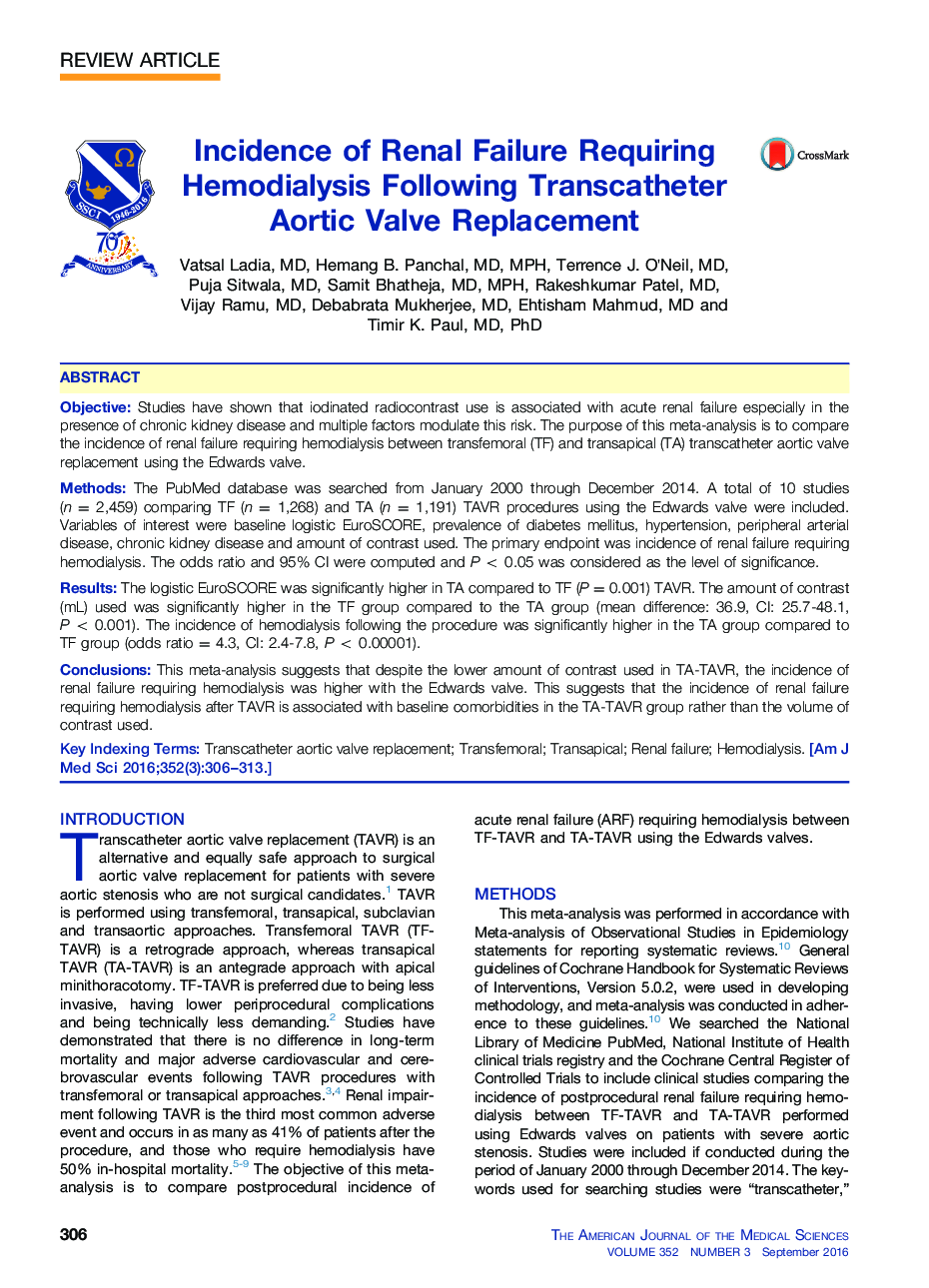| Article ID | Journal | Published Year | Pages | File Type |
|---|---|---|---|---|
| 2863081 | The American Journal of the Medical Sciences | 2016 | 8 Pages |
ObjectiveStudies have shown that iodinated radiocontrast use is associated with acute renal failure especially in the presence of chronic kidney disease and multiple factors modulate this risk. The purpose of this meta-analysis is to compare the incidence of renal failure requiring hemodialysis between transfemoral (TF) and transapical (TA) transcatheter aortic valve replacement using the Edwards valve.MethodsThe PubMed database was searched from January 2000 through December 2014. A total of 10 studies (n = 2,459) comparing TF (n = 1,268) and TA (n = 1,191) TAVR procedures using the Edwards valve were included. Variables of interest were baseline logistic EuroSCORE, prevalence of diabetes mellitus, hypertension, peripheral arterial disease, chronic kidney disease and amount of contrast used. The primary endpoint was incidence of renal failure requiring hemodialysis. The odds ratio and 95% CI were computed and P < 0.05 was considered as the level of significance.ResultsThe logistic EuroSCORE was significantly higher in TA compared to TF (P = 0.001) TAVR. The amount of contrast (mL) used was significantly higher in the TF group compared to the TA group (mean difference: 36.9, CI: 25.7-48.1, P < 0.001). The incidence of hemodialysis following the procedure was significantly higher in the TA group compared to TF group (odds ratio = 4.3, CI: 2.4-7.8, P < 0.00001).ConclusionsThis meta-analysis suggests that despite the lower amount of contrast used in TA-TAVR, the incidence of renal failure requiring hemodialysis was higher with the Edwards valve. This suggests that the incidence of renal failure requiring hemodialysis after TAVR is associated with baseline comorbidities in the TA-TAVR group rather than the volume of contrast used.
